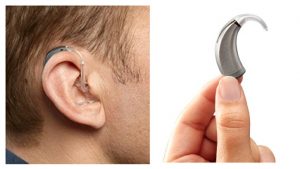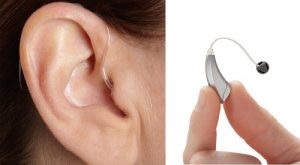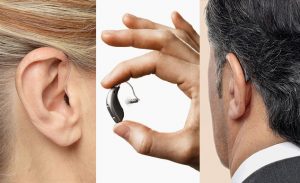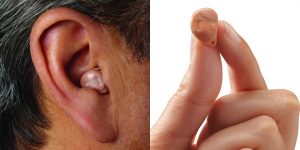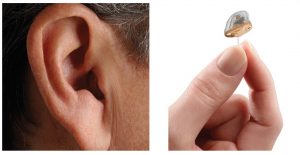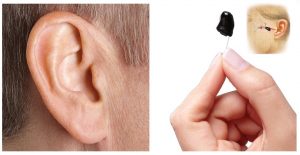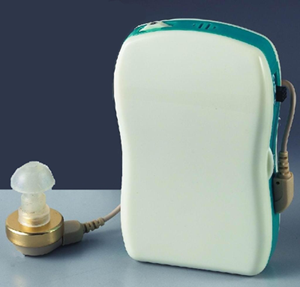Types of Hearing Aids
There are many types of hearing aids which vary in size, power and circuitry. Among the different sizes and models are:
Behind the ear aids (BTE)
BTE aids consist of a case, an ear-mould or dome and a connection between them. The case sits behind the ear with the connection from the case coming down the front into the ear.
Mini BTE or Micro BTE
It also fits behind/on the ear, but is much smaller. A very thin, almost invisible tube is used to connect the aid to the ear canal. Mini BTEs may have a comfortable ear piece for insertion ("open fit"), but may also use a traditional ear-mould. Mini BTEs allow not only reduced occlusion or "plugged up/echoing" sensations in the ear canal, but also increase comfort, reduce feedback and address the cosmetic concerns for many users.
Receiver in the Canal / Ear aids (CRT / RIC / RITE / RIE)
BTE hearing instruments that place the loudspeaker (receiver) directly in the ear with/without a fitted ear-mould are often referred to as “Receiver in the Canal” instruments. These instruments use soft ear inserts, typically of silicone, to position the loudspeaker in the patient’s ear. Some of the advantages with this approach include improved sound quality, reduced case size, “open-fit” technology, reduced feedback and immediate patient fitting.
In-the-Canal Hearing aids (ITC)
This hearing aid is made to fit inside a person’s ear canal. It is very small and difficult for others to see. ITC models usually have a rotating manual volume control or a push button for program toggle.
Completely-in-Canal aids (CIC)
This hearing aid fits completely in a person’s ear canal and is also virtually unseen. The CIC is the smallest model in hearing aids. It is a custom made shell that contains all the electronic components. The shell is placed deeply in the ear canal, making the hearing aid almost invisible. A CIC therefore facilitates the cosmetic requirements of most of the clients. These aids are becoming increasingly popular as no one can actually see that you are wearing a hearing aid. Remote Control facility is available for manually controlling the volume and other sound quality parameters.
Invisible-in-the-canal aids (IIC)
These aids are smaller than CIC aids & they fit deeper into the ear canal. IIC are built to fit past the second bend of the ear canal, allowing the faceplate to be seated deeply in the ear, providing an invisible hearing aid fitting. The performance and cosmetic advantages of this fitting style appeal to a wide variety of hearing aid candidates, especially those who do not consider visible hearing aid as an option.
Pocket Aids
These aids are worn in a pocket or harness at chest level. It consists of the body of the hearing aid containing the microphone, amplifier and controls. A cord transmits the electrical output to a receiver, which converts this signal into sound. The receiver is attached to a mould, which holds it in place.
